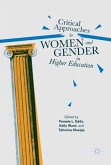External drivers are pressing for a more privatized approach to higher education and research, a greater reliance on technology and the more efficient use of resources. But many academics perceive these changes to be imposed from above with little consultation and an inadequate consideration of the beliefs and values that have traditionally guided academic work. The tensions between academic beliefs and contemporary drivers is more evident in certain national systems than in others, and within each system the tension raises particular issues. This book provides a framework for the analysis of recent changes in institutional governance and management in higher education and their impact on the academy and academic work globally. It pinpoints, as far as possible, the areas where recent change is perceived positively and negatively by academics themselves. Changing Governance and Management in Higher Education: The Perspectives of the Academy draws on the findings of an international study based on a common survey of academics in eighteen countries across five continents. The book opens with a chapter outlining the key issues, drivers and challenges that inform contemporary discourse around academic work and the profession in general. It then focuses primarily on national case studies, comparing changes in the top tier with the lower tiers of national systems, public and private institutions, and other differentiating factors as appropriate in each country, which include both mature and emerging higher education systems. The book concludes by proposing a series of generalizations about the contemporary status of governance and management of institutions of higher education.
From the book reviews:
"This edited volume received the Best Book Award from the Higher Education Special Interest Group (HESIG) of the Comparative and International Education Society (CIES) in 2012. ... this is an excellent resource for research about the international professoriate and for academics interested in the comparative study of higher education systems. ... It should be an essential addition to the libraries of colleges and universities around the world as well as the resource collection of serious scholars of the academic profession." (John C. Weidman, Higher Education, Vol. 68, 2014)
"This edited volume received the Best Book Award from the Higher Education Special Interest Group (HESIG) of the Comparative and International Education Society (CIES) in 2012. ... this is an excellent resource for research about the international professoriate and for academics interested in the comparative study of higher education systems. ... It should be an essential addition to the libraries of colleges and universities around the world as well as the resource collection of serious scholars of the academic profession." (John C. Weidman, Higher Education, Vol. 68, 2014)








